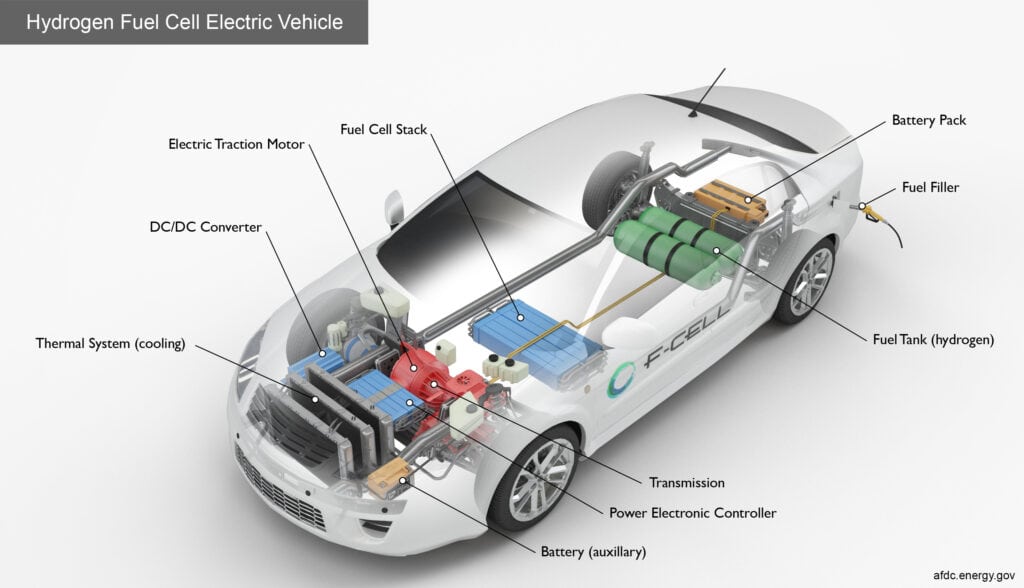A look at the Alternatives to the Alternatives
Written by Peter Coll for the Looking Forward Column in MACS ACtion Magazine May 2023
For the past several years, the automotive industry has been hyper focused on the introduction of Battery Electric Vehicles (BEVs), including legislation, infrastructure, efficiency and many other aspects. There is no doubt that this train is rolling at a rapid pace, and the technology continues to advance. But what other options exist? What will happen in the future to all the Internal Combustion Engine (ICE) vehicles that are rolling on the roads?
Alternatives
One of the earlier options that was introduced involved Fuel Cell Electric Vehicles (FCEVs). These vehicles commonly use a Hydrogen Fuel Cell to produce electricity to power electric motors, similar to BEVs. FCEVs also have a battery to recapture and store energy during braking to improve efficiency. They emit only water vapor from the tailpipe and are classified as a zero-emissions vehicle to meet the increasing number of global regulations limiting future ICE vehicle sales. The advantages of FCEVs include vehicle range vs. fueling time. Similar to current ICE vehicles and the core infrastructure model that is needed mirroring the traditional gas station that we seem to have on nearly every street corner.

More Alternatives

Another option is synthetic gasoline, by Porsche through a Chilean-based pilot project in conjunction with Siemens Energy and HIF Global. The theory is quite simple: split water into its component parts of hydrogen and oxygen; then combine the hydrogen with the carbon component of carbon dioxide, extracted from the air, to form methanol. Methanol can then be refined into what Porsche is calling eFuel.
Regardless of the type of energy used for propulsion, the emissions, both direct and indirect, from the generation of this energy and construction of the fuel delivery infrastructure must be factored into the environmental impact equation. However, simply getting to a zero-harmful-emissions value from the tailpipe does not tell the whole story. The process of transitioning to a greener transportation system is complex and cannot be viewed in a vacuum.
MACS’ Participation
MACS continues to actively participate in the development and regulatory processes. Representing our members and the greater Vehicle Thermal Management industry, with the SAE cooperative research programs, proposed EPA rulemaking stakeholder meetings, and industry education and training. As a MACS member, you have exclusive access to upcoming event notifications, A/C service trends and training opportunities.
Learn More
Access ACtion Magazine: https://macsmobileairclimate.org/ & sign in to access members only.
Not a MACS Member? Join today at: https://macsmobileairclimate.org/membership/.

Leave a Reply